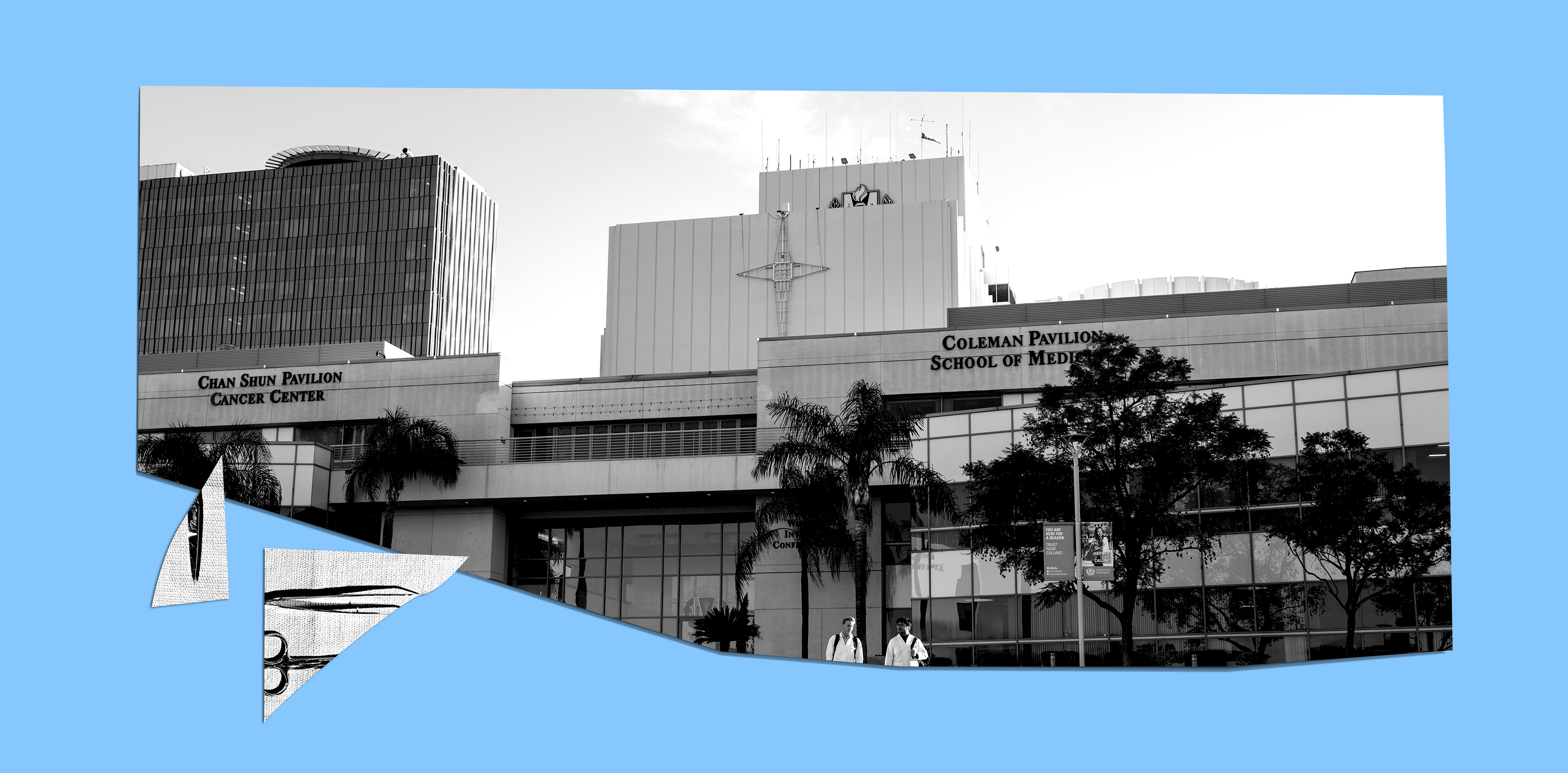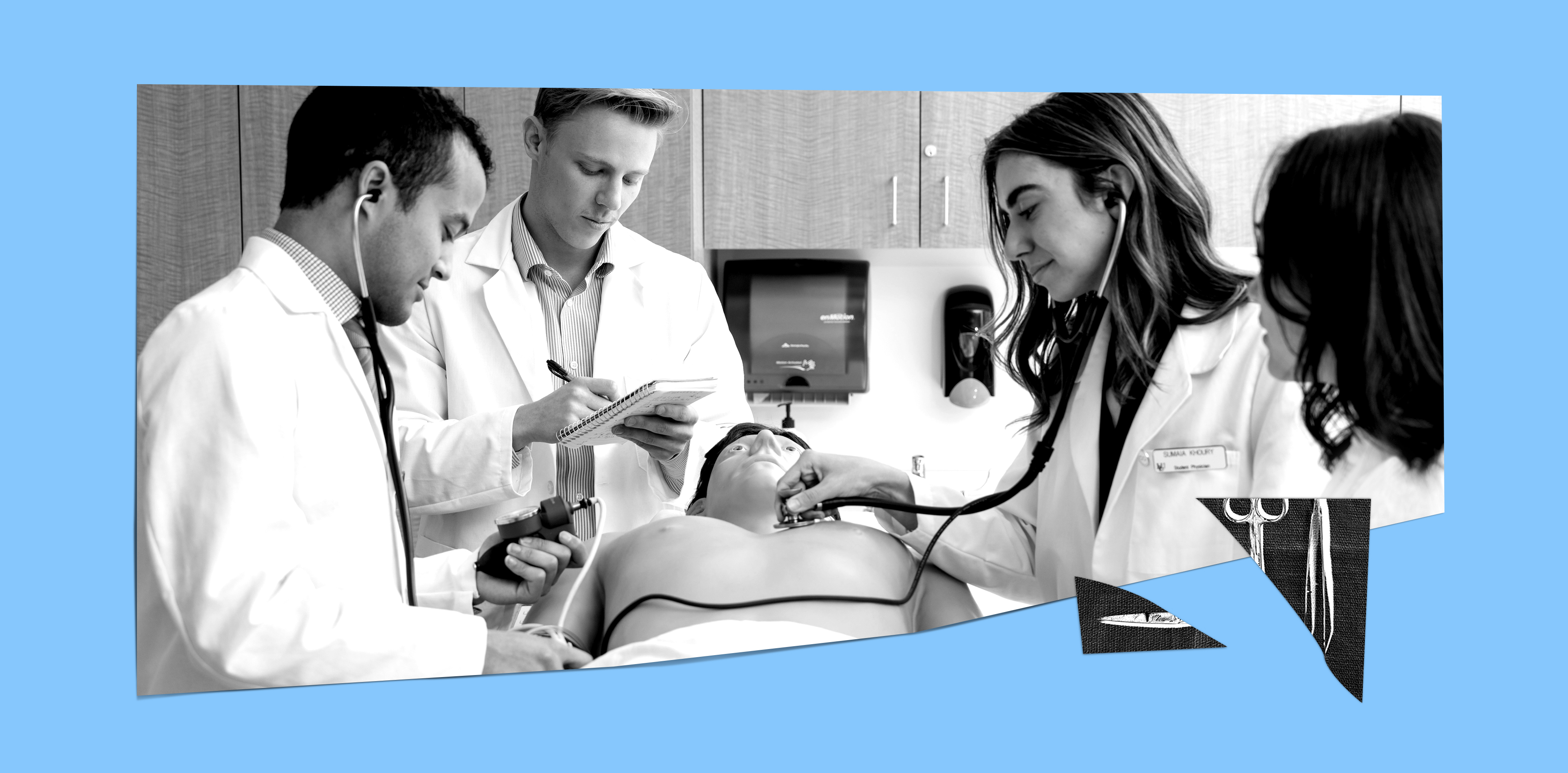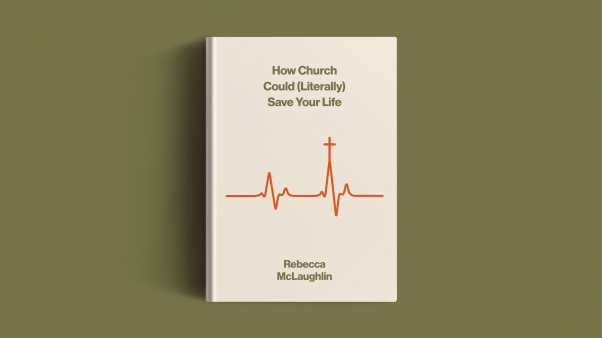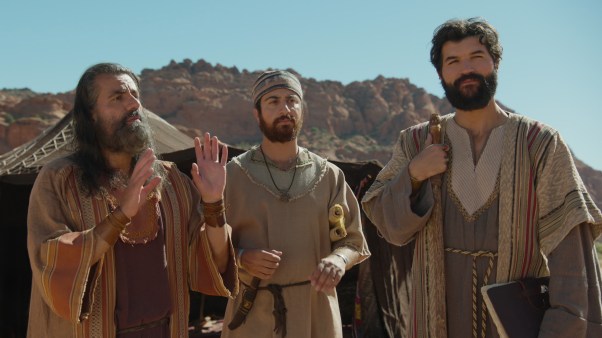Andrew Wai hit a breaking point as a third-year medical student. Exhausted from the pressure of doing rounds and studying for exams, he began viewing each patient as another barrier in between him and the end of his shift.
“You ask me another question?” Wai thought at the time. “That just means I’m getting home later.”
Overextended hospital staff know the feeling, and patients know what it feels like to be on the other end. US health care right now is a story of shortages, staff burnout, and unhappy patients. Between backed-up emergency rooms, overloaded nurses, and denied insurance claims, the medical system is overdue for change.
Today’s leading medical organizations are coalescing around the idea of “whole person care,” a holistic approach where doctors set out to build relationships with patients and take social, spiritual, emotional, and behavioral factors into account.
In other words, US health care needs more compassion.
Over in San Bernardino, California, one lonely Christian medical school has been teaching this “whole person care” model for more than a century.
Loma Linda University School of Medicine is an unusual US medical school where doctors in training learn to read EKGs and pray for their patients, John Mark Comer’s The Ruthless Elimination of Hurry is required reading, and medical students can take a class on God and human suffering.
 Illustration by Mallory Rentsch Tlapek / Source Images: Loma Linda University
Illustration by Mallory Rentsch Tlapek / Source Images: Loma Linda UniversityUntil last year, Loma Linda appeared to be the only remaining Protestant medical school granting MD degrees that still integrates faith in the education. It has been joined this year by a new medical school at Belmont University, the first Christian medical school to open in the US in more than 40 years.
Wai was in med school at Loma Linda when he noticed his failure to approach his patients as humans rather than tasks. It made him realize he needed spiritual care.
Loma Linda weaves faith into the curricula, requires chapel attendance, and draws from the approach of Seventh-day Adventist hospitals established around the world, though faculty and students are not required to belong to that tradition.
Now a faculty member at the school and an internal and pediatrics doctor at its hospital, Wai talked over lunch with students about how Christian community and spiritual habits saved him from the cynicism of such a heavy and high-pressure job.
US health economics reward a high volume of patients and not long conversations. The “whole person” approach requires a different kind of doctor than our current health system is designed for: one who listens to patients and thinks holistically about whether they can afford particular medicines, for example. But it also needs doctors with the inner resilience to endure what can feel like a crushing health care system.
Loma Linda faculty members discovered they needed to teach doctors not just how to ask the right questions and really listen to patients but how to take care of themselves.
In a lab at the medical school, first-year medical students were struggling to intubate a baby-size manikin. A faculty member showed the knot of students the delicate task of opening the mouth and finding the right size of laryngeal mask to go down such a small airway so the patient can breathe while unconscious.
Intubation is a typical medical-school drill, but across campus another—more unusual—class was beginning on this foggy morning in Southern California.
Amy Hayton, an internal medicine doctor at the local Veterans Affairs hospital and a faculty member at Loma Linda, opened her class on whole person care with prayer and lectured on how doctors can make patients in their care feel “seen and known.”
Hayton gave examples of questions to ask, like “What about this illness concerns you the most?” or “What is your source of strength?” Patients lead the conversation, she said, and a doctor shouldn’t be pushy or proselytizing. Based on student feedback, the school also recently added curriculum for having sensitive conversations with the religiously unaffiliated, or “nones.”
Conversation could cover a range of issues: Are mental health issues affecting this person’s ailment or ability to carry out treatment? Does this patient have community? Is the patient living in a neighborhood with little access to fruits and vegetables? Does the patient have a spiritual source of support?
Asking these questions leads not only to better treatment but also to better trust with physicians, Loma Linda has found.
Hayton recounted to her class a Loma Linda medical student working with a stroke survivor who couldn’t speak. When no one on the patient’s team could find out how to communicate, the medical student searched out the patient’s background and found the patient had been in a choir. With this type of stroke (aphasia), people can often sing but not talk. The patient was able to communicate for the first time since the stroke by singing a hymn with the student.
“I cry thinking about it because it was so powerful,” Hayton said to her students. “I do believe that, with Christ in you, each of you reveals something unique as you express that to your patients.”
For Hayton, practicing whole person care has kept her from frustration with US health care. Becoming a doctor requires such intense focus on performance, she said students have to unlearn some habits to “truly be present with [their] patients.” Graded simulations at the school teach students how to have a conversation with a family after a child’s death or how to sensitively navigate something as basic as an interruption while talking to a patient in pain.
The week before CT’s visit, Duke University School of Medicine’s Harold Koenig, a leading researcher on how integrating spiritual concerns improves health outcomes, met with Loma Linda staff about their curricula on whole person care.
“They’re the poster child on all of that,” he said.
More research about the efficacy and outcomes of the whole-person approach could have more schools emulating the Seventh-day Adventist school. Koenig found in 2010 that only 7 percent of US medical schools have required courses or content on spirituality and health.
“Only a handful are actually doing this,” he said. “And Loma Linda was one of the first.”
Christian medical schools have been disappearing in the United States, either by drifting from their faith-based origins or by encountering finance and accreditation troubles.
Baylor College of Medicine disaffiliated from Baylor University in 1969 and shed its Christian mission. Oral Roberts University opened a medical school and hospital in 1981 but closed both in 1990 under the weight of millions in debt.
Oral Roberts had hoped its “holistic medical approach” would draw patients for its teaching hospital, according to a CT report in 1984. But patients didn’t materialize to help underwrite the school’s budget. As Oral Roberts found, medical schools are expensive to run, and there are few to begin with: Only 160 offer MD programs in the US. By comparison, many more schools award degrees for physician’s assistants and nurse practitioners.
A few Christian universities like Liberty and William Carey have osteopathic medical schools granting DO degrees but not traditional medical schools. DO doctors tend to end up practicing primary care. Their education has a slightly different emphasis, and those programs are less common than MD programs. Jesuit schools like Loyola, Creighton, and Georgetown still make faith and holistic care part of their education.
Richard Hart, president of Loma Linda University Health, oversees the $4 billion budget and 18,000 employees between the hospitals and medical schools. “There’s very few organizations that can say that, 119 years in, we’re doing the same thing,” Hart said. “It’s always the mission versus margin issue. … How do you maintain a common philosophical commitment when you get that size?”
Working at Loma Linda since 1972, Hart remembers two times when the school considered becoming part of a larger hospital system for financial stability, but commitment to its Christian mission always kept leadership from carrying out that plan.
“Starting medical schools is tough, and right now it’s frankly become more of a business than a mission for many of these,” said Hart. “I’m not aware of any other Christian ones trying to start, but they should be. There’s something very special about that … whole person care in a Christian setting.”
Hart remembered the school absorbing doctors in training from shuttered programs like Oral Roberts and another Christian residency program in Tennessee that shut down a few years ago. When a Christian school would close, accreditors tried to send students to another Christian school, and that was often Loma Linda.
In addition to teaching doctors about empathetic conversations, Loma Linda emphasizes going to underserved populations, both in global missions and in rural areas of the US.
Loma Linda sends a high percentage of its graduates into primary care, particularly family medicine. Primary care medicine is less lucrative than specialist medicine—like urology or oncology—and often leads to burnout because of the high volume of patients doctors need to see to make their economics work.
The Department of Health and Human Services is projecting a severe shortage of primary care doctors, especially in nonmetropolitan areas.
Joseph Elkins, a fourth-year medical student at Loma Linda, wants to help address that shortage. He has applied to two types of residencies in primary care: internal medicine and family medicine.
Elkins did not grow up Adventist but, as a Christian, was drawn to the school’s emphasis on whole person care and rest in particular.
“We humans need time and space to stop and rest and worship,” Elkins said. “That’s countercultural to medicine and doctors, the way we tend to think and live.”
Spiritual practices serve as part of “Christian physician formation” at Loma Linda. Students learn from the formation classes, from small groups with other students, and from physician mentors about prioritizing prayer, service, and solitude—habits that can easily fall away when a primary care doctor is seeing 50 patients a day or when an emergency room physician is going from crisis to crisis.
But faculty members also tell students they don’t have to feel that all their spiritual grounding is gone if they miss a day of personal prayer time. Mentoring doctors tell students to look for other people in their workdays to minister to them and tell them to look for God to show up when they have no resources within themselves.
As Elkins has done rotations, finding rest has been harder than he thought. He is rotating on teams at the hospital every couple weeks, absorbing as much knowledge as he can, preparing for exams, and trying to perform well clinically.
“I remember over time gradually feeling like I was drifting from the reasons that I came to medical school,” he said. “The pressure of performing well on exams feels more real than these abstract ideas of whole person care.”
He found himself asking patients fewer questions, making less space to have conversations or to process his own emotions and experiences. What helped him recenter was being around doctors and other students who had the same objective of compassionate care.
Elkins and fellow students are becoming doctors at a time when Americans now rate the quality of their health care at a 24-year low and trust in doctors is slipping.
While health care workers were first applauded as heroes at the beginning of the COVID-19 pandemic, the public later turned on them. Assaults on health care workers have increased, especially on nurses and in emergency rooms, so much so that hospitals began giving staff “panic buttons” to help protect them.
“Our patients don’t trust us anymore,” intensive care nurse Amy Arlund told NBC in 2021.
Loma Linda is trying to rebuild that trust.
 Illustration by Mallory Rentsch Tlapek / Source Images: Loma Linda Univsersity
Illustration by Mallory Rentsch Tlapek / Source Images: Loma Linda UnivsersityHayton, who oversees the curriculum on whole person care at the school as an associate dean, has noticed a trend in the third year of medical school when students start rotations on the wards. Their performance starts to matter a lot, and they run out of time to sit and listen to patients and care for themselves.
Loma Linda can’t completely change the intense nature of medical school. But the solution the school has found is to attach students to mentors they can trust to keep them from building up cynicism toward patients or the system they’re working in. A supportive community, Hayton thinks, is the way to counter the exhaustion of students working and studying 16 hours a day.
Across campus from Hayton’s class was one of those mentors. Wai, the internal and pediatrics doctor, was debriefing with medical students who had just finished a morning of seeing pediatric patients with him.
The students were wolfing down sandwiches and analyzing how conversations with patients had gone. One mom had been upset, saying they hadn’t run enough tests on her son with abdominal pain. Wai knew they had gone above and beyond in caring for her son, but he apologized to the mom anyway. He wanted her to feel that they were listening to her.
Then Wai cautioned the students: “How do I make sure how she responds to me is not how I respond to the rest of the day?” The students needed emotional fortitude, he said.
“Sometimes presence equals success, even if I can’t see the result of that,” he told them. At the end of lunch, Wai prayed for the students going back to their work: “Would they feel deeply loved. They are precious in your sight.”















